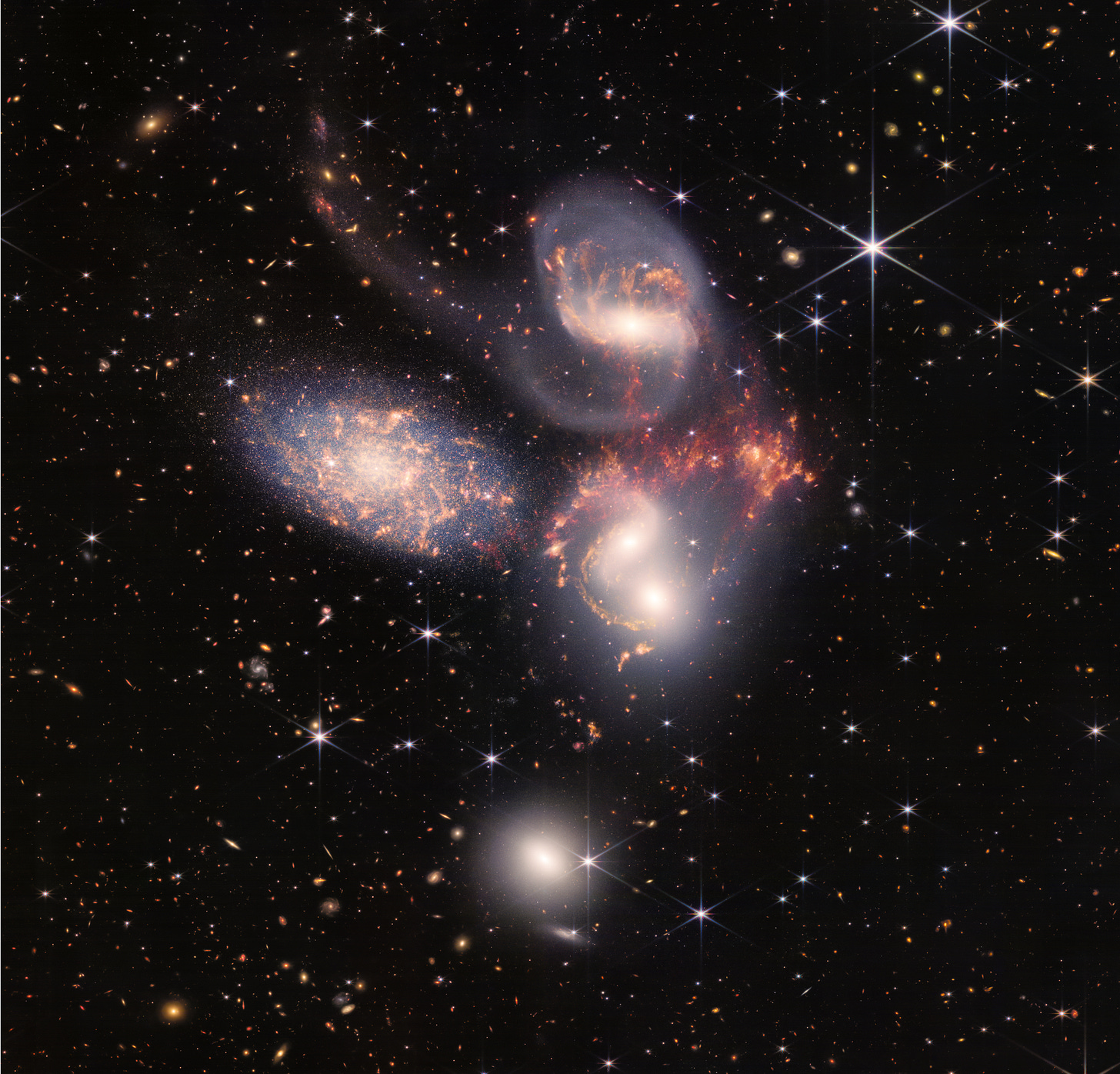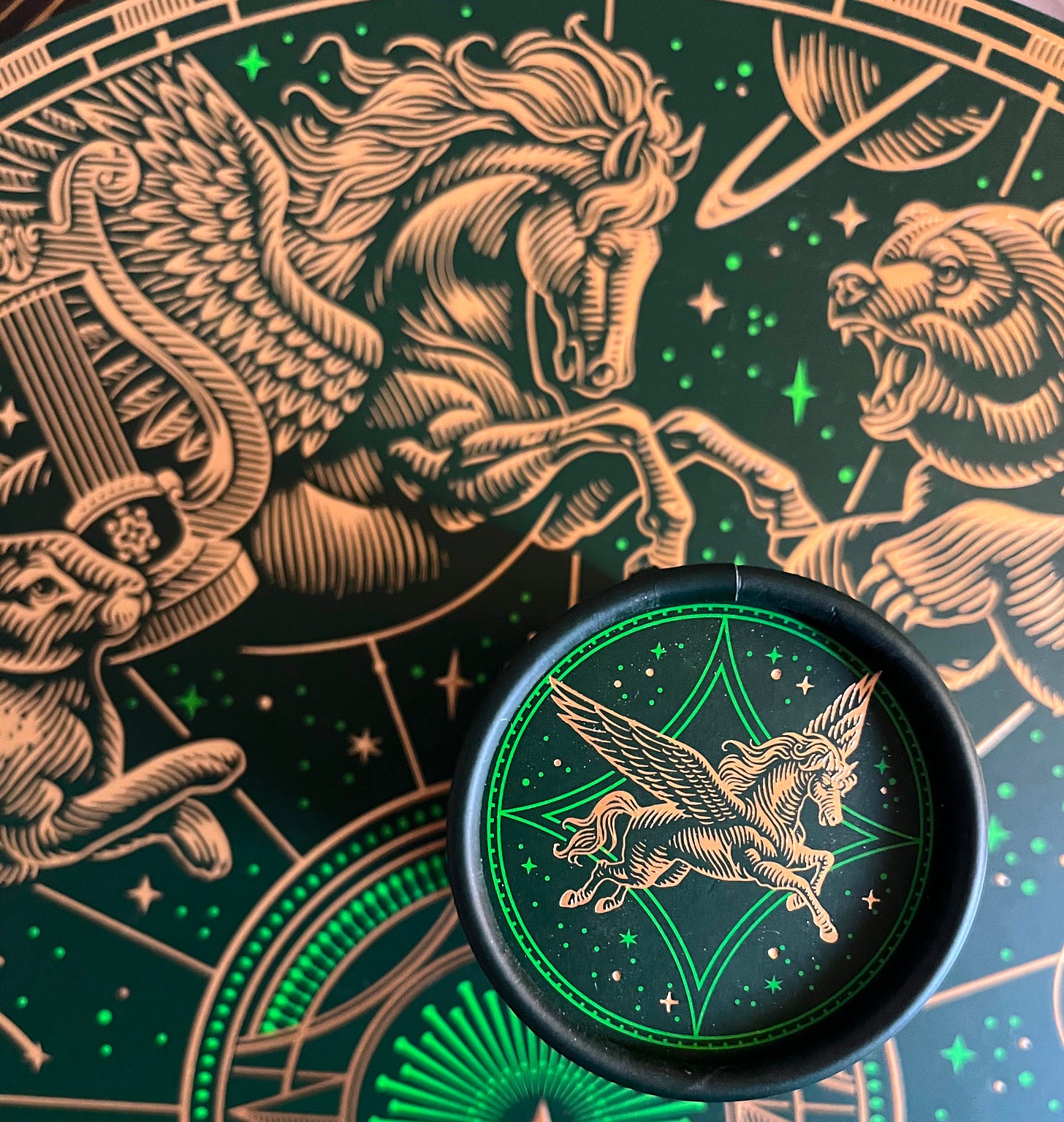
Tonight’s constellation can be found using Saturn as a guide. Look for a bright star like object in the south as evening falls. This is the ringed planet. Above and to the left of Saturn, is a large and prominent square of medium bright stars, with streamers of fainter stars trailing behind. This is the square of Pegasus, the brightest part of the constellation named after the flying horse of Greek myth. Pegasus begins his flight over the sky during autumn months and is one of the defining constellations of that season, but sticks around for winter too. The square asterism is also known as the Turtle to the Lakota and the Table in Lithuania. The Sumerians called the square of stars the Field, associated with Ea, the god of wisdom and water. One of the stars in the square, called Alpheraz, actually belongs to Andromeda and is one of two stars we know of that straddle two constellations, the other being Elnath in Taurus which has also been shared with Auriga.
According to the Greeks, the mythical flying horse was born in a rather gruesome way. When the hero Perseus chopped off the head of the gorgon Medusa, Pegasus burst forth fully formed from her severed neck, unfurled his great white-feathered wings, and flew off to have many adventures.
The horse’s name might come from the Greek for spring or fountain, and it was said that springs of pure water burst forth wherever his hooves hit the ground. One of the springs created by Pegasus was beloved and protected by the Muses, goddesses of the arts, it was said that drinking its water gave you poetic inspiration.
The warrior Bellerophon used the horse to locate and slay the fearsome Chimera, a fire breathing monster with a lion’s head, a goat’s body and a snake’s tail. But when the heroic deed was done, Bellerophon flew on Pegasus towards Mount Olympus to win the gods’ favour, but the gods thought the hero too arrogant and sent a horsefly to bite Pegasus. In discomfort, the horse kicked and shook, and Bellerophon fell off, plunging to his death.
Pegasus, though distracted by the insect, reached the summit of the sacred mountain, and the gods placed the horse in the sky as a constellation for his achievements. It was said that Zeus used Pegasus, along with fellow constellation Aquila the eagle, to carry his thunderbolts, and I do wonder if this is because these stars become most apparent during summer and early autumn when lightning storms can occur in the Mediterranean region.
Another character that rode on Pegasus for his quests was Perseus. After the horse appeared from the blood of Medusa, whom Perseus had just killed, the hero then hitched a ride on the flying horse to rescue the princess Andromeda from being devoured by the monster Cetus. The mission was successful and Perseus married Andromeda, whisking her away into the sunset on the back of the winged horse.
It may be that the Indians were influenced by the Greeks (or vice versa?) because their story of the constellation tells of Pegas, a horse who flies upside down in the sky, with the power to produce soma (the nectar of the gods) from his hooves. The Moon was seen as great bowl that overflowed with soma whenever Pegas kicked it. The connection with magical liquids and containers with Pegasus continues in Ireland, where the constellation was called the Cauldron of Rebirth. To the Arabs, the Square of Pegasus was a great bucket pouring water. It is likely these associations, including the Greek stories of enchanted springs, were because of this constellation’s appearance coinciding with nourishing rainy seasons.
Another festive spin could be that this great square in the sky is an open present, with Pegasus’s legs/wings representing ribbons left loose after unwrapping! And there are many gifts to be found inside this box…

Here is one of the amazing pictures taken by the James Webb space telescope, of a region of Pegasus called Stephan’s Quintet, which is five galaxies close together, some of them colliding and merging. (Can you see the smiley face?)
Pegasus is also home to the first extrasolar planet (or exoplanet) discovered orbiting a star other than our Sun: 51 Pegasi. Next year will be 30 years since its discovery by Swiss astronomers in 1995. It is what is known as a ‘Hot Jupiter’, a giant gas planet that orbits very close to its star, with an orbit of only four days, making it even closer to its star than Mercury. Such close proximity to its parent star gives the planet a surface temperature of over 1000C. The Hot Jupiter-type planet is common across many stars, but is a planet type that is absent from our solar system, and astrophysicists are still trying to work out how such a large gas planet can form or even exist so close to its star without being vapourised. Unsurprisingly, such roasting hot planets are not good places to look for life!
The finding of this exoplanet was a watershed moment in astronomy, prior to this, we thought our solar system was the only one. Since then, thousands of exoplanets have been found and analysed in detail, with more being discovered every year. Using our incredible ground and space telescopes, we can find out if they are made of gas or rock, what the atmospheres of these distant worlds are made of, and even whether they are similar to our Earth. All thanks to a discovery made in the constellation of the flying horse almost 30 years ago.

Prompt:
Relating to Pegasus being a horse with wings, able to fly wherever it pleases, and the discovery of a planet in its stars, the prompt is about distant horizons…do you have any plans to travel in the coming year? If so, where?
It needn’t be far. A short trip in your country can be just as enriching as a journey to a faraway land. Will this travel be for a holiday, for family, or something more permanent such as moving home?



